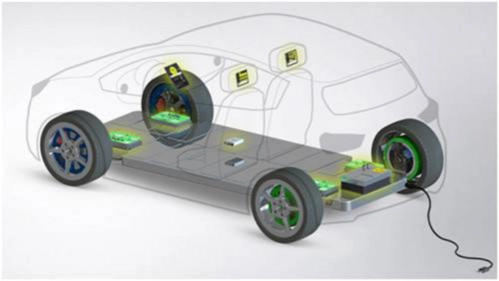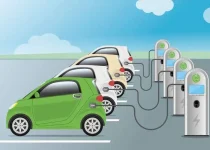What are the key differences between hybrid, plug-in hybrid, and fully electric vehicles?
Hybrid, plug-in hybrid, and fully electric vehicles are all designed to improve fuel efficiency and reduce emissions compared to traditional internal combustion engine (ICE) vehicles. However, they employ different technologies and offer varying levels of electrification. Here are the key differences between these three types of vehicles:
- Hybrid vehicles (HEVs):
- HEVs combine an internal combustion engine with an electric motor and a small battery pack.
- The battery is charged through regenerative braking and the ICE, not by plugging into an external power source.
- The electric motor is used to assist the ICE, improving fuel efficiency and reducing emissions.
- HEVs typically cannot drive on electric power alone for more than short distances and at low speeds.
- Examples: Toyota Prius, Honda Insight.
- Plug-in hybrid vehicles (PHEVs):
- PHEVs have a larger battery pack than HEVs, allowing them to drive on electric power alone for a more extended range (usually 20-50 miles).
- The battery can be charged by plugging into an external power source or through regenerative braking and the ICE.
- When the battery is depleted, the vehicle operates as a traditional hybrid, with the ICE and electric motor working together.
- PHEVs offer a blend of electric and ICE driving, making them suitable for both short daily commutes and longer trips.
- Examples: Chevrolet Volt, Mitsubishi Outlander PHEV.
- Fully electric vehicles (EVs or BEVs):
- EVs are powered solely by an electric motor and a larger battery pack, with no internal combustion engine.
- The battery must be charged by plugging into an external power source, such as a home charger or a public charging station.
- EVs produce zero tailpipe emissions and are typically more energy-efficient than HEVs and PHEVs.
- The driving range of modern EVs varies widely, with many offering ranges of 200-300 miles or more on a single charge.
- Examples: Tesla Model 3, Nissan Leaf, Chevrolet Bolt.
In summary, hybrid vehicles combine an ICE with an electric motor to improve fuel efficiency, but cannot be plugged in to charge. Plug-in hybrid vehicles can be charged by plugging into an external power source and offer limited all-electric driving range. Fully electric vehicles rely solely on electric power and must be charged by plugging into an external power source, providing zero tailpipe emissions and the greatest potential for energy efficiency.

When considering the differences between hybrid, plug-in hybrid, and fully electric vehicles, it is essential to also consider the advantages and disadvantages each type offers:
- Advantages of hybrid vehicles (HEVs):
- Improved fuel efficiency and reduced emissions compared to traditional ICE vehicles.
- No need for external charging, as the battery is charged through regenerative braking and the ICE.
- Less range anxiety, as the vehicle can operate on gasoline when the battery is depleted.
- Typically lower upfront cost compared to PHEVs and EVs.
Disadvantages of hybrid vehicles (HEVs):
- Limited electric-only driving capabilities.
- Less environmentally friendly than PHEVs and EVs due to continued reliance on gasoline.
- Potential for higher maintenance costs compared to EVs, as the vehicle still has an ICE.
- Advantages of plug-in hybrid vehicles (PHEVs):
- Ability to drive on electric power for short distances, reducing emissions and fuel consumption.
- Flexibility to use gasoline for longer trips, minimizing range anxiety.
- Can take advantage of available charging infrastructure while still having the backup of an ICE.
- Suitable for drivers who want to transition to electric driving but still need the flexibility of a gasoline engine.
Disadvantages of plug-in hybrid vehicles (PHEVs):
- Higher upfront cost compared to HEVs and some ICE vehicles.
- Lower all-electric range compared to EVs.
- More complex powertrain, with potential for higher maintenance costs compared to EVs.
- Advantages of fully electric vehicles (EVs or BEVs):
- Zero tailpipe emissions and higher energy efficiency.
- Lower operating and maintenance costs compared to ICE vehicles and, in some cases, PHEVs.
- Potential for better performance, including faster acceleration and smoother driving experience.
- Access to various incentives and benefits, such as tax credits, reduced registration fees, and carpool lane access in some regions.
Disadvantages of fully electric vehicles (EVs or BEVs):
- Higher upfront cost compared to HEVs and some ICE vehicles, although this gap is narrowing as battery costs decrease.
- Dependence on charging infrastructure, which may not be as widely available or convenient as gasoline stations.
- Range anxiety, particularly for models with lower battery capacity or when traveling in areas with sparse charging infrastructure.
Ultimately, the choice between a hybrid, plug-in hybrid, or fully electric vehicle will depend on an individual’s driving habits, budget, access to charging infrastructure, and environmental priorities. Each type of vehicle offers distinct benefits and drawbacks, and it is essential to weigh these factors when making a decision.


